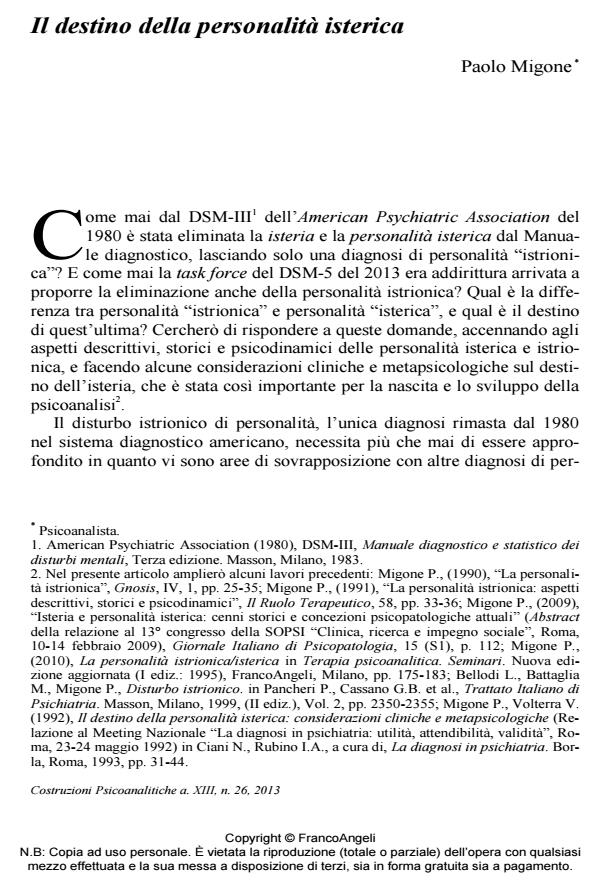The fate of hysterical personality
Journal title COSTRUZIONI PSICOANALITICHE
Author/s Paolo Migone
Publishing Year 2013 Issue 2013/26
Language Italian Pages 17 P. 53-69 File size 242 KB
DOI 10.3280/COST2013-026003
DOI is like a bar code for intellectual property: to have more infomation
click here
Below, you can see the article first page
If you want to buy this article in PDF format, you can do it, following the instructions to buy download credits

FrancoAngeli is member of Publishers International Linking Association, Inc (PILA), a not-for-profit association which run the CrossRef service enabling links to and from online scholarly content.
The problem of hysterical and histrionic personalities is discussed from the descriptive, historical and psychodynamic points of view. The DSM-IV (1994) diagnostic criteria for histrionic personality disorder are presented (these criteria are maintained in the DSM-5 of 2013), and then the original conceptualization of hysteria by Freud is described, followed by the theoretical revision made by Judd Marmor in 1954. The reasons why the DSM-III of 1980 decided to use the term "histrionic" instead of "hysterical" are described, and the passage from a clinical syndrome to a set of personality traits is discussed. Since the classical symptoms of hysteria, that were so common in Freud’s times, have now almost disappeared, we are left with so called "histrionic" personality traits, which are not so different form some traits of other severe personality disorders, such as borderline.
Keywords: Hysterical personality, histrionic personality, psychoanalytic diagnosis, character, psychoanalysis, psychodynamics of hysteria
Paolo Migone, Il destino della personalità isterica in "COSTRUZIONI PSICOANALITICHE" 26/2013, pp 53-69, DOI: 10.3280/COST2013-026003